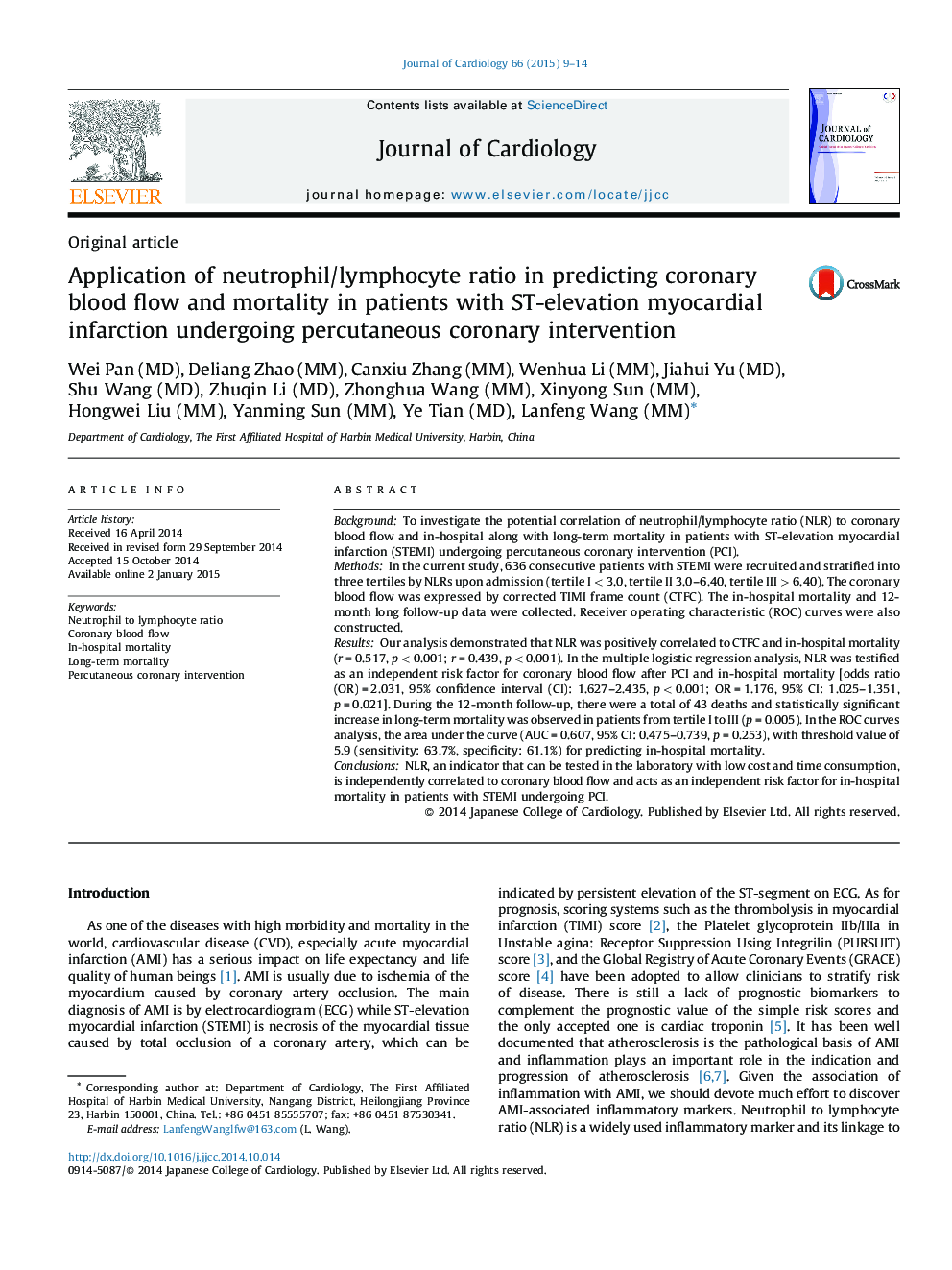| Article ID | Journal | Published Year | Pages | File Type |
|---|---|---|---|---|
| 2962799 | Journal of Cardiology | 2015 | 6 Pages |
BackgroundTo investigate the potential correlation of neutrophil/lymphocyte ratio (NLR) to coronary blood flow and in-hospital along with long-term mortality in patients with ST-elevation myocardial infarction (STEMI) undergoing percutaneous coronary intervention (PCI).MethodsIn the current study, 636 consecutive patients with STEMI were recruited and stratified into three tertiles by NLRs upon admission (tertile I < 3.0, tertile II 3.0–6.40, tertile III > 6.40). The coronary blood flow was expressed by corrected TIMI frame count (CTFC). The in-hospital mortality and 12-month long follow-up data were collected. Receiver operating characteristic (ROC) curves were also constructed.ResultsOur analysis demonstrated that NLR was positively correlated to CTFC and in-hospital mortality (r = 0.517, p < 0.001; r = 0.439, p < 0.001). In the multiple logistic regression analysis, NLR was testified as an independent risk factor for coronary blood flow after PCI and in-hospital mortality [odds ratio (OR) = 2.031, 95% confidence interval (CI): 1.627–2.435, p < 0.001; OR = 1.176, 95% CI: 1.025–1.351, p = 0.021]. During the 12-month follow-up, there were a total of 43 deaths and statistically significant increase in long-term mortality was observed in patients from tertile I to III (p = 0.005). In the ROC curves analysis, the area under the curve (AUC = 0.607, 95% CI: 0.475–0.739, p = 0.253), with threshold value of 5.9 (sensitivity: 63.7%, specificity: 61.1%) for predicting in-hospital mortality.ConclusionsNLR, an indicator that can be tested in the laboratory with low cost and time consumption, is independently correlated to coronary blood flow and acts as an independent risk factor for in-hospital mortality in patients with STEMI undergoing PCI.
